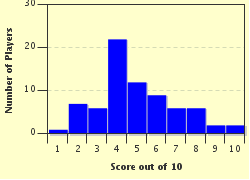Quiz Answer Key and Fun Facts
1. In which continent would you NOT be able to find a native hedgehog living in the wild?
2. What is the collective name for a group of hedgehogs?
3. Are hedgehogs and porcupines related?
4. Hedgehogs curl up into a ball for protection against threat by predator, but for which other reason do they also curl up?
5. When hedgehogs encounter a new smell, they will lick or chew the object and then produce a saliva which they will spread over their body. What is another name for this practice?
6. Hedgehogs scurry around under bushes and hedgerows as they look for food, but can these adorable little creatures swim?
7. Hedgehog spines shed out naturally several times during their adolescence. What is this process called?
8. The majority of the hedgehog diet is insectivorous, but if the winter is harsh and his supply is short, he will always appreciate a supplement left out in the garden. Which of these should you NOT feed him?
9. Which breed of hedgehog is most commonly kept as a domesticated pet?
10. The new cycle in life will result in mum hedgehog giving birth to anything up to ten babies in her litter. What is the name of her young?
Source: Author
Plodd
This quiz was reviewed by FunTrivia editor
rossian before going online.
Any errors found in FunTrivia content are routinely corrected through our feedback system.


